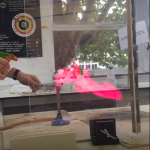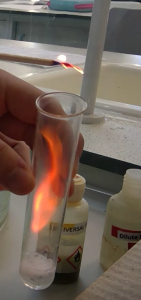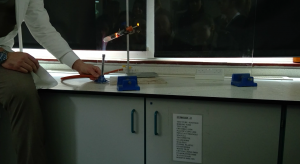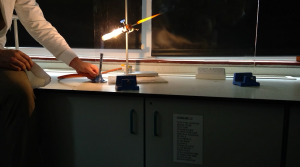By Paul Murphy, Deputy Head Academic.
Perhaps Plato’s desire to ensure an expert mariner sails the ship in which you travel is a more striking illustration for the need to appoint and trust experts to do their business than pointing out that when it comes to how children learn, it is the teacher who is best placed to deliver students from the metaphorical storms they must weather. Although applying a gentle rhetorical massage to a critique of the character of democracy in the Peloponnese during the fourth century BCE is probably poor soil from which to begin an explanation of how Wimbledon High School has re-visited its own model of education, assessment and academic support, it captures the essence of our basic approach; in lieu of an accessible, clear and viable set of examination criteria and grade-boundaries (which in any case differentiate, rather than provide a guide for how to educate), we as a common room turned to each other, to pedagogical expertise and to our (extensive) experience to decide how to best support our girls throughout their time on Mansel Road.
Cherie Blair, a champion (albeit self-proclaimed) of the under-educated, noted in a speech on the subject that “someone with 4 A grades at A-Level from [a famous Public School] may look good on paper…but push a bit harder and often you get the impression they have learned to pass exams rather than think for themselves”. Although I risk (and indeed am being) highly reductive, it is my firm belief that learning to pass examinations, although a valuable skill (the most valuable in terms of future earnings, beside inheritance), really only teaches you do to precisely that, pass examinations. To consider the Junior perspective, SATS do not help GCSEs, which in turn offer little skill-based progression to A-Level alone. Data shows us that students who do well at GCSE tend to take well to A-Level. This does not mean GCSE is a good preparation to take the higher discipline; both are differentiating measures, and so it is likely doing well at one measure of capacity and intellect will see you do well at another. The same is true of the jump from A Level to Degree, at least in terms of skills (I should note that some studies do link outstanding A Level performance to 1st class degrees and that I, of course, write generally and for emphasis). Examinations do prove that learning has occurred, and are a basic requirement of universities and employers, so we had them keenly in our focus as we developed our model, but they were certainly not the focal-point. Outstanding examination results are intended to be the happy by-product of focussed, considered and subject-specific and synoptic education (not the oxymoron it might at first appear).
My (internal) starting point when opening discussions with Heads of Department and Staff was the work of Piaget (now a rather unfashionable educational philosopher, despite his respected grounding in child psychology). Piaget found, in 1920, that children’s power of reasoning was not flawed after all. In areas where children lacked life experience as a point of reference, they logically used their imagination to compensate. He additionally concluded that factual knowledge should not be equated with intelligence and “good” decision-making.
Over the course of his six-decade career in child psychology, Piaget also identified four stages of mental development. “Formal operations,” the fourth and final stage, involves 12-to-15-year-olds forming the ability to think abstractly with more complex understandings of logic and cause and effect. This is when he considered (and later theorists have not successfully, in my view, challenged this developmental stage) the brain at its most plastic in terms of learning beyond mere knowledge (though, of course, as I noted above, he felt knowledge was still essential for positive outcomes). I was keen therefore that our system of assessment, our schemes of work, our developmental model, should be more consciously building undergraduate skills, concepts and modes of working from Year 7. There were, of course, many of these elements in existing assessment models and schemes of work, but we needed greater clarity and accuracy (and indeed conviction) about what such skills were, and how they could be developed, taught and assessed over a seven-year period, in each subject discipline (until our education system’s conception of subjects as disparate areas of studies subsides, subject-specific skills will be the way of thinks in the United Kingdom).
So, the first step was to communally identify our goals, which was relatively straightforward. In a meeting with a key team of HoDs and SMT members, we thrashed out the key aims we would like to use to frame our assessment policy. Of course like all good discussions, concordat was neither complete nor decisive (and like all chairs of such discussions, I am conscious my own starting point will have coloured the outcome), as our thoughts will be subject to change and amendment as greater understanding comes forward. We settled on two themes; that our key idea would be the pursuit of scholarship, with an “end-goal” of providing every student will the tools and skills to thrive at a top university, conservatoire or other tertiary institution (our context precludes the immediate focus of work at 18 for most), and that each department would draft their own set of progressive criteria, describing in detail the “threshold-concepts” that demonstrate the distinctive steps in understand each subject more fully and completely, and using their extensive experience to explain to parents, girls and themselves, what these moments were, which skills a girl was currently able to use, and which they were working to next on the ladder to becoming a capable undergraduate. As such, the skills required in Year 7 had to be mindful of ensuring the skills required at University were developing in the right way, and our highest “progress levels” are beyond the requirements of GCSE and A-Level respectively.
A good “threshold-concept” example (elaborated for all HoDs in a session we held with Ian Warwick, an educational-consultant who focusses on the academic development of highly able pupils) is the moment at which a student of English Literature first recognises that the characters are fabrications, and that the author deliberately writes to create and develop them. Without this step, analysing literature is at best comprehending the narrative of a story, with it, a world of opportunity opens. We tasked all HoDs to work with their departments, to find all such steps and progressions which students undergo during their secondary and further education, and to stage these progressions in a table which demonstrated them. An example is below (English Literature), at Appendix A. A note must be made here to the elasticity and dedication of the staff involved in the development process; to hold this close a micro-scope to your methods of assessment is difficult and challenging in the current political climate, where examination pressure can so easily trump educational goals.
A two-year process was devised for the development of these threshold concept progress tables, with a view to the new model being adopted in Years 7-10 from September 2017, and the whole school from September 2018. The first part of the model has been drafted and implemented, with our first (internal) reporting assessment scheduled in October. The model has broken progress down into these threshold concepts further and skills progressions, with separate descriptors for “skills” and “concepts and ideas”, so that girls, parents and teachers can all clearly identify and track the progress of a student with accuracy and confidence, whilst also showing students what they need to do next in order to progress. The rationale for a dual-descriptor approach (see again Appendix A) was based in both practical evidence (a similar model is already in use, and has proven very successful, at the flagship Westminster Harris Sixth Form) and educative and psychological theory, where the ability to understand and the ability to do remain distinct concepts (see Naglieri, Goldstein or notably Brooks (in Psychology Today)) that require acknowledgement, assessment and explanation in their own right. Each threshold has been standardised using internal moderation, cross-reference with standards in the reformed GCSEs being undertaken in various subjects (our A Level draft is pending) and also, by heavily relying on the pedagogical knowledge and experience of the Wimbledon High staff. Departmental meetings remain the epicentre of good teaching and learning, and it is from them, in combination with educational theory, that this system was devised.
The system has also sought to allow departments the freedom to devise schemes of work in a way which encourages subject-specific skills to subsist at the core of our academic offering. The model moves away from collective assessment weeks and towards a fluid style of assessment, where teachers’ overall opinions of a pupils’ progress are combined with punctuated and careful written assessment that allow pupils to display and develop skills beyond those expected for their age-range, without sacrificing the need for clear, identifiable points of progress. MidYIS (despite its inaccuracies it remains the best available base-line data from a test scenario) forms the basis of our initial projections for pupil progress on our scale, but it is by no means the main driver over time, as yearly pupil targets will be clear, fluid, subject specific and, most importantly, highly individual. Progress up our various “WimLevels” will be tracked half-termly, without the need for cumbersome reporting systems, and we hope that it will focus our girls on the simplest goal in self-improvement: which step must I take next to get better? Our Assistant Head, Performance, devised a specific flight path for each girl’s projected progress both intra-year and year-on-year, which can be amended based on achievement should the demon MidYIS be proven a too miserly tool.
The finished product means that all girls, parents and staff will receive a clear, robust message about the skills they have developed and concepts they have learned, every half-term, and in every subject. It will inform scheme of work planning, assessment, intervention, tracking and teaching, setting our goals as classroom practitioners based on mastery and excellent of the subjects we are teaching, with fantastic examinations results little more than a by-product which proves that we are ensuring our girls are always learning and developing academically in the best possible way.
Mr Paul Murphy
Deputy Head (Academic)
19th October 2017
www.wimbledonhigh.gdst.net/

 Imagine if we could replay, in slow motion, our favourite demos, to watch the magic of reality unfold frame by frame. Imagine always being able to see the demonstration clearly, regardless of where you were in the class. Imagine if we had a backup in case a demonstration, for whatever reason, went awry. Imagine if we were teaching a different topic entirely, and felt that now would be a wonderful time to illustrate our point with a display, but there was no time to throw it together. (Imagine if you wanted to show all your friends really cool science videos…)
Imagine if we could replay, in slow motion, our favourite demos, to watch the magic of reality unfold frame by frame. Imagine always being able to see the demonstration clearly, regardless of where you were in the class. Imagine if we had a backup in case a demonstration, for whatever reason, went awry. Imagine if we were teaching a different topic entirely, and felt that now would be a wonderful time to illustrate our point with a display, but there was no time to throw it together. (Imagine if you wanted to show all your friends really cool science videos…)
 “Woah!”
“Woah!” “WOAAAAH!”
“WOAAAAH!”



